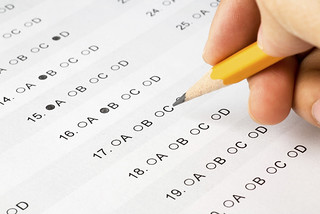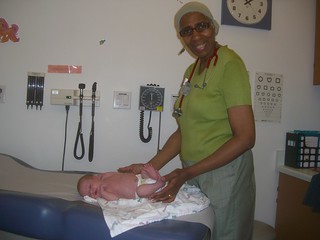Category — 3.2 The “P” Professionals
Mental Health Therapists: Psychotherapists, Psychologists and Social Work Counsellors
There are a number of mental health professionals who offer a variety of services to children, adolescents and adults. The two main types are:
- Psychologists: psychologists are professionals who have a deep understanding of human development, abnormal psychology and therapeutic therapies and practices. They:
- Assess individuals through the use of standardized tests (Fig. 1), checklists, observations and interviews;
- Diagnose mental illness (such as obsessive-compulsive disorder) or a developmental disability (such as autism);
- Offer psychotherapy on an individual or small group basis;
- Refer people to more specialized professionals.
- Psychiatrists: psychiatrists are medical doctors who also have a in professional psychology. They also assess individuals, diagnose them with a mental illness or a developmental disability and offer them psycho-therapy. They are also able to offer prescription drugs to those who need them.

Figure 1. Standardized tests
To learn more about mental health professionals, please visit the birth to six section of this course.
see References
January 30, 2012 No Comments
Physiotherapist
PTs work with individuals who have difficulties with gross motor skills, movement and posture. They also work with individuals whose muscles hurt. Through a variety of exercises, PTs help individuals (Fig. 1):

Figure 1. Physiotherapist helping with exercises
- Improve muscle tone;
- Improve mobility;
- Improve sense of balance;
- Improve range of motion;
- Improve coordination between different muscle groups;
- Improve one’s ability to walk, run, go up and down the stairs and sit;
- Improve one’s ability to move from one position to another (that is, move from sitting to standing);
- Develop motor skills that the child has not yet achieved;
- Learn how to use adaptive equipment such as wheelchairs and walkers.
PTs use a variety of techniques to help children develop the motor skills that they lack. Such techniques include passive techniques (the PT moves the child’s limbs to improve muscle movement) and active techniques (the PT gets the child to move his or her own muscles). PTs may help children improve their muscles through the use of water, in a pool or a bathtub (Fig. 2).

Figure 2. Active technique to develop motor skills
PTs work with a variety of children, including children with Down syndrome, cerebral palsy, spina bifida and traumatic brain injury. They offer these children therapy on an individual basis, or in small groups.
PTs often serve on children’s school-based Individual Education Plan (IEP) (see full Glossary) team. They work very closely with parents, teachers, special educators and other professionals (such as OTs), in order to make the school environment and the classroom as inclusive as possible.
For more information about PTs, please visit the following website.
see References
January 30, 2012 No Comments
Pediatrician
Pediatricians are medical doctors who specialize in treating infants, children and adolescents. They specialize in diseases that mostly affect children (Fig. 1). They also:

Figure 1. Pediatrician
- Treat children who are ill or sick;
- Prescribe medications, such as antibiotics, to children who need them;
- Monitor children’s health by measuring their height, weight and head circumference.
Pediatricians may also engage in preventive medicine and may refer children to specialists such as Ear Nose and Throat (ENTs).
For more information about pediatricians, please visit the following website.
see References
January 30, 2012 No Comments